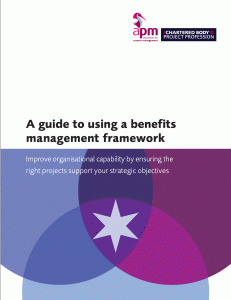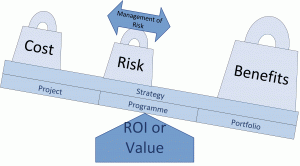Changing a culture from Projects-led to Benefits/Goals-led
The Situation
The client (Sellafield Ltd) is a multi-billion turnover multi-site organisation, with one of the most complex civil engineering operations in Europe. Because of its complexity, staff have broken the work down into “projects”, specific pieces of work, some falling into the category of megaprojects (>$1billion over 20 years), which they can do and report on progress.
However this wasn’t leading to the right results. A Parliamentary Accounts Committee in 2015 identified that the client’s projects were heavily over cost and mostly running late. They recommended to focus all activities on the achievement of Goals, which would highlight delays and high costs in a much clearer way and drive in flexibility. The regulator translated this into a mandatory requirement, and included a requirement to focus on benefits and benefits management.
The Task
Three years in, the client recognised the slow pace of change, and lost a member of staff who was working on a “benefits management framework”. Hugo was brought in to produce a framework over a 4 week period, although after it was delivered, the Executive Suite staff admitted that they had thought it would be impossible, and as a result of delivering the framework, they extended the work to include implementation of benefits management and the culture change. A tall order, given the challenges that large numbers of programme and portfolio consultants had faced over the last few years
The Action / Approach
 The first task, to prepare a Benefits Management Framework, was tackled by arranging meetings with all of the portfolio leads and programme leads from some of the largest programmes. I could have delivered a standard Benefits Management Framework, but it needed to be in their language and using their examples, and perhaps most importantly, the members of the various decision-making panels that would decide whether to approve it, and whether to implement it in their areas, needed to feel that they owned it. It was an intense 4 weeks with meetings during the day and writing through the night.
The first task, to prepare a Benefits Management Framework, was tackled by arranging meetings with all of the portfolio leads and programme leads from some of the largest programmes. I could have delivered a standard Benefits Management Framework, but it needed to be in their language and using their examples, and perhaps most importantly, the members of the various decision-making panels that would decide whether to approve it, and whether to implement it in their areas, needed to feel that they owned it. It was an intense 4 weeks with meetings during the day and writing through the night.
Following delivery of the framework, I was asked to implement it. This involves working with each programme lead team across one of the portfolios as a pilot, giving intense support to understand and develop the benefits for their programme, combined with workshops where the lead team and sponsor would endorse what had been done in the work between workshops, and commit to the work for the next workshop. It’s important that the leadership team make decisions on the basis of evidence, not simply on what those present can remember off the top of their heads, so a lot of information is developed and brought to each successive workshop.
The Result
The client Benefits Management Framework has been accepted by the business, and is currently going through the various approvals panels. The alignment to organisational culture is highlighted as a reason why it is progressing successfully.
Benefits management, and a focus on benefits as the way of demonstrating achievement of objectives (whether enterprise or strategic objectives, portfolio objectives, or the objectives of the individual programmes) is rapidly changing the culture and approach of the pilot portfolio, and other portfolios are requesting awareness workshops to raise their own understanding and begin the process of changing their own ways of working and their own culture.
The response is extremely positive, and there’s now a movement to review the current approach to Social Impact and make it more structured.


